Types of clematis, their differences, features of the cultivation and reproduction of clematis bush
Clematis is a climbing flowering plant, the name comes from the Greek "klema", which means a climbing plant. In our country, you can come across other names for clematis, for example, clematis or warthog.
Content:
- Features of clematis
- Decorative properties of shrub clematis
- The main types of clematis
- Clematis bush care
- Reproduction of clematis
- Diseases and pests of clematis
Features of clematis
Clematis resembles a wild plant, in structure it is similar to hellebore, delphinium, anemone and buttercup.
There are more than 300 types of clematiswhich are widespread throughout the world, you cannot find a flower only in Antarctica. Basically, all types are wrapped around any support that stands nearby.
According to the classifier, clematis is considered a woody plant, while it is young - the stem is herbaceous, rather thin, but after a couple of years, it becomes fibrous and tough. But this does not apply to all species, there are both herbaceous and bushy representatives. Certain types of clematis are evergreen, which means that the leaves do not fall throughout the year.
The main feature of clematis is that its flowers provide only pollen, but no nectar.
Flowers of different shades, usually bright, which attracts insects well. One plant can contain both female and male flowers.
The active phase of clematis growth begins in mid-spring, when the snow has melted and the soil temperature reaches 5 degrees. If clematis developed on last year's shoots, they begin to bloom at the end of May, while young plants bloom at the end of summer. The flowering period lasts 1 to 3 weeks, depending on the species. Bush clematis blooms from June to August.
The scent of each flower emits a pleasant aroma that combines echoes of jasmine, primroses and almonds.
The plant is used both for garden decoration and for collecting into bouquets.
Decorative properties of shrub clematis
The brightness of the flower depends on the degree of illumination of the territory, the more light the plant receives, the more saturated the color will be, naturally, the less light, the paler. But you can't overdo it with light either, otherwise the petals may fade.
Bush clematis flowers pleasant deep purple or blue color:
- The shape of the flowers also depends on the species; in the bush species, the flowers are single bells.
- The size of the flower is average; during the flowering period, the entire area of the shrub was covered with flowers.
- If the plant is a hybrid form, then the bell can reach a size of 25 cm.
- Thanks to special technologies, some flower gardens can achieve that about 200 flowers grow on one plant.
- On one shoot of bush clematis there are up to 10 bells.
Depending on the species, the height of the plant also fluctuates, the minimum is 8 cm, the maximum is 12 m. An ideal partner and neighbor in the garden for clematis will be an aristocratic rose, many European gardens use this particular combination.
Medium and tall clematis use in order to hide imperfect or unsightly places in the garden:
- Since the bush form cannot cover a tall building with its winding branches, it can be used to create a composition or to decorate the first floor of a room, a corner of a house or part of a wall.
- Shrubs can be used to decorate the bare parts of other climbing species.
The main types of clematis
To stop getting confused in a wide variety of clematis and learn how to distinguish between them, it is worth briefly mentioning the features of the most common types, among them:
- straight
- hogweed
- six-lobed
- kurshorny lobed
Detailed description:
- Direct clematis is more common in humid regions: in the forests of central Russia, Central Europe, and the North Caucasus. The stems can reach a height of 1.5 meters, are thin, unstable, and require a garter at home. The roots of the plant can penetrate deep into the soil up to 50 cm. Flowering begins in late spring and lasts two weeks, the flowers are multiple, white, small. If you cut off the stems after flowering, then in August you can expect a second flowering. Any soil is suitable for direct clematis, but it is preferable to use a slightly acidic one. The amount of color for a plant is not important, it can survive the winter without shelter.
- Clematis hogweed grows up to 90 m in height. It blooms with delicate blue flowers in late summer, the flowering period lasts 2 weeks. The flower petals open gradually, passing from one form to another. At the onset of the first cold weather, flowers and leaves do not die off, only by the middle of autumn the aerial part falls off.
Such clematis loves the open, but not scorching sun, it can endure the winter without shelter.
- Six-petalled clematis is more likely to grow in the wild than at home. Grows up to 1 meter in height, cast leathery, small flowers, white. The flowering period begins in September and is short-lived, often less than 2 weeks. The plant can be found in the Far East, Japan, Mongolia, Siberia, China. Prefers dry air and open sun, winds along the slopes of ravines. It can take on a warm, bright place in the garden. Well tolerates winter.
- Shrub clematis is the pride of many gardeners... In the wild, it can be found in Mongolia or China. It grows up to 80 cm, begins to bloom at the end of summer, flowers can be yellow or purple, depending on the subspecies. In winter, its shoots do not die off.
Clematis bush care
Bush clematis is an evergreen, unpretentious plant. But this does not mean that it does not need to be monitored and looked after at all; it is very important to ensure that the shoots are pruned.
In total, three trims are made:
- The first one before planting
- Second in the middle of summer
- Third autumn
This is done to stimulate the development of the root system, leaving only a few nodes.
In the first year of plant life, it is better to remove the flowers immediately, since the trunk has not yet matured and may not withstand the load. it is better to tie up shoots, direct their growth, otherwise the branches can get tangled and turn into a ball.
The wire is placed close to the ground, it is important not to damage the stem, otherwise an infection can get into the plant.
The soil should be periodically loosened, weeds near the plant should be removed. It is advisable that the soil is constantly slightly moistened, at the same time, do not overflow. Watering becomes more abundant every year. Young plants, in the first years of his life, are watered several times a week in warm weather. If autumn is also warm and dry, then watering is provided in the same amount as in summer.
Clematis loves fertilizers in any form:
- Feeding with nutrients is carried out twice a month in small portions, it is desirable that the fertilizer is liquid.
- The first feeding is done in the spring, when the shoots have just begun to grow.the best fertilizer during this period will be ammonium nitrate (20 g / 10 l of water), chicken droppings (in a ratio of 1:15) or mullein (in a ratio of 1:10). For 1 bush uses 5 liters of top dressing.
- The next time you can alternate organic and mineral fertilizers, only during the formation of buds they can be applied simultaneously.
- At the end of summer, ash is brought in, waiting for the ripening of new shoots.
- When the growing season begins, you can water with water with the addition of a small amount of boric acid, literally 1-2 grams per 10 liters, or 2-3 grams of manganese potassium per 10 liters of water.
- Before the beginning of winter, they begin to apply organic or mineral fertilizers, such as: granular superphosphate potassium sulfate, potassium magnesium. This is done when digging, fertilizer is applied to the previously watered soil.
If clematis grows in central Russia, then it is advisable to cover it for the winter. As soon as severe frosts come, you need to wait for dry weather and start hilling the plant with peat, earth and sand to a height of 20 cm.At the same time, pruning can be done.
Experts have invented a very reliable method of shelter, it is called air-dry. A wire frame is built over the plant, roofing material, film or roofing felt are strengthened on them. It is not recommended to use very dense material, as it can cause plants to grow out.
Reproduction of clematis
Growing clematis at home will certainly need to multiply the plant.
To breed a certain species, then use seeds and a vegetative way, so that the variety or form is only vegetative.
For seed propagation:
-
The largest are selected.
- You can sow them in autumn or spring, when the temperature warms up to 5 degrees Celsius.
- If the seeds are planted not in the ground, but in boxes or pots, then it is recommended to use a mixture of earth and sand in a ratio of either 1: 1 or 1: 2.
- Seeds are laid to a depth of twice the diameter of the seed itself, they will begin to germinate at a temperature of 25 degrees.
- Crops can be weeded periodically and watered a little more often.
- When the senses begin to sprout, they need to be provided with sunlight, warmth and high humidity.
- Growing young shoots need to be pinched for root growth and shoot expansion.
- For the winter, the seedlings are sheltered from the cold, and only in the spring can they be grown in a trench with fertile soil.
- After the first flowering, which will occur for 2-3 years, clematis can be moved to a permanent place.
The vegetative way of reproduction is grafting, reproduction by layering and dividing the bush or grafting. The most popular and easiest way is green cuttings.
Cutting is carried out during the period of active growth, when its stem is elastic and hard, but not yet lignified.
Diseases and pests of clematis
Like any other plant, clematis can get sick. The most common diseases:
- Gray rot.
- Fusarium.
- Brown spotting.
- Rust.
- Powdery mildew.
- Withering (wilt).
If a disease is detected in time, then it can be quickly dealt with, the main thing is to accurately determine the parasite.
The worst thing for clematis is wilting, in this case the plant begins to wither abruptly and very rapidly, this applies to both young and adult shoots. In this case, the affected leaves must be urgently cut off, and the soil must be treated with a copper-soap emulsion, potassium permanganate or a solution of foundationol.
For the prevention of any disease with a fungus in early spring and autumn, the bases of the shoots are sprayed with foundation.
Clematis can be affected by pests such as:
- Mice.
- Medvedki.
- Caterpillars.
- Snails.
- Slugs.
- Spider mite.
- Aphid.
It is very scary for clematis if dangerous worms penetrate into its roots. You can understand this by the slow growth of the plant, by the shape of the leaves, which become smaller, and by the bulges on the roots. As quickly as possible, you need to cut off the affected areas and burn.For prevention, you can plant dill, watercress next to it, coriander, marigolds, parsley, calendula.
More information can be found in the video.



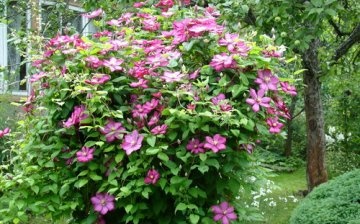
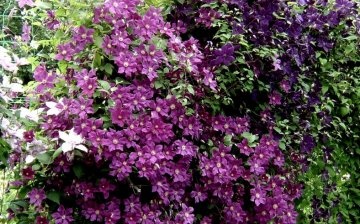
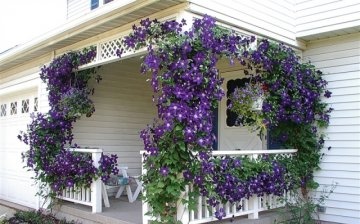
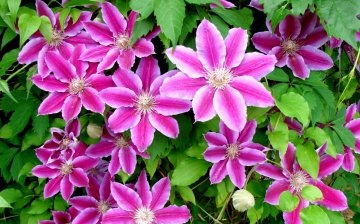
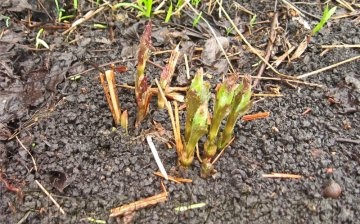

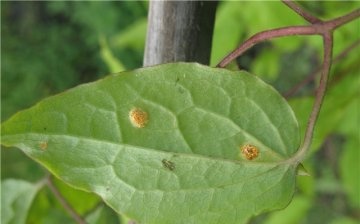







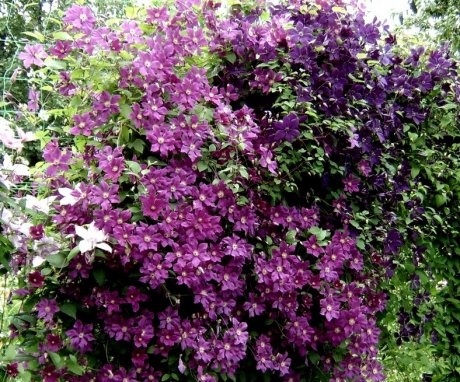

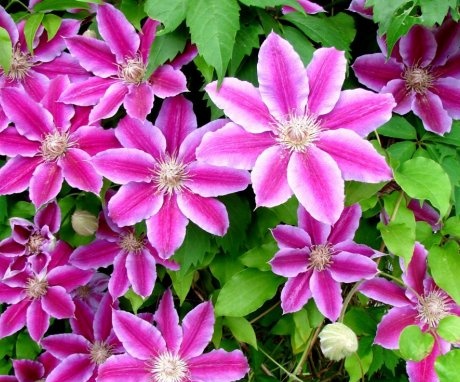
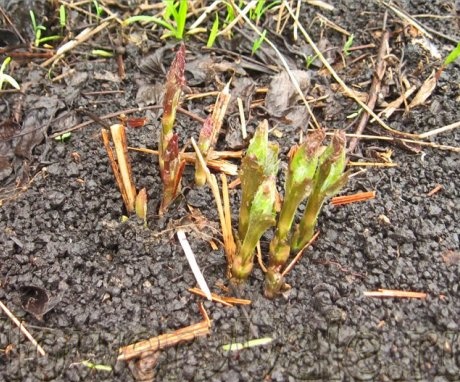
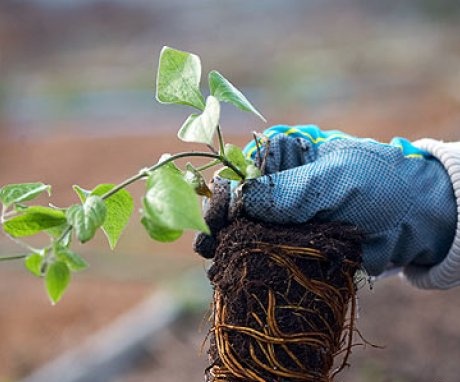
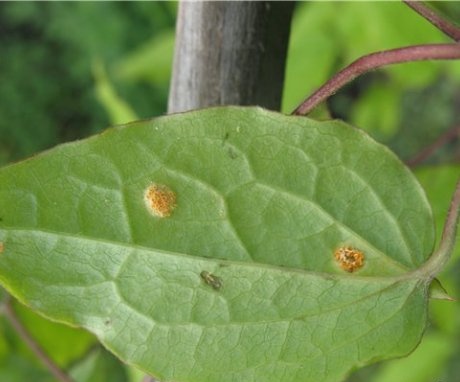
Many of my friends plant clematis on their plots. the most unpretentious are the most common blue-lilac with medium-sized flowers. In general, they say that clematis are quite capricious flowers.